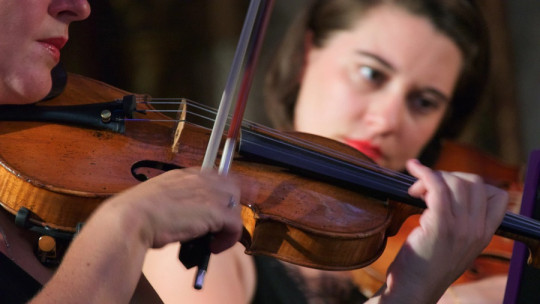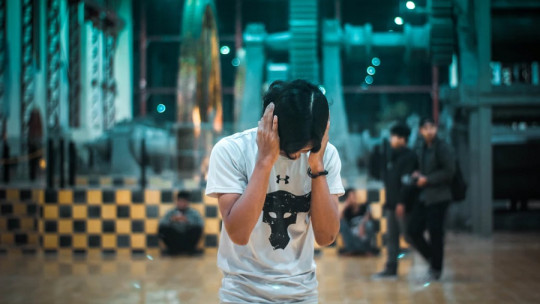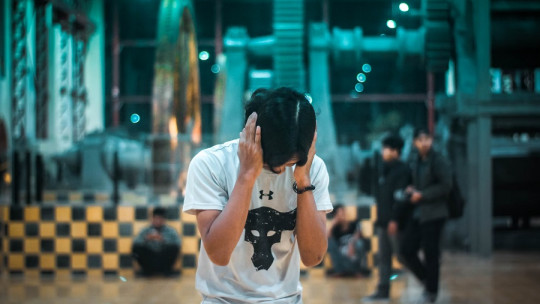
Ligyrophobia, also called phonophobia, is persistent and intense fear of loud or very high-pitched sounds It usually occurs in young children, although it is also common in adults who are constantly exposed to these stimuli.
We will see below what ligyrophobia is and what are its main symptoms and treatment.
Ligyrophobia: fear of loud sounds
The word “ligyrophobia” is composed of the Greek “ligir” which means “sharp” and can be applied to sounds of this type; and the word “phobos”, which means “fear”. In this sense, ligyrophobia is literally the fear of high-pitched sounds. Another name by which this fear is known is “phonophobia”, which is derived from “phono” (sound).
Ligyrophobia is a specific type of phobia, since it is characterized by a fear of a specific stimulus (loud sounds or very high-pitched sounds). This fear can occur in the presence of noise, but not necessarily. Also can be triggered in a situation where a loud sound is anticipated to occur
This is common, for example, in popular festivals where firecrackers, rockets or balloons are used, or also in people who have prolonged contact with electronic devices that can emit high-pitched sounds. Likewise, it can be applied to sounds as well as to different voices or even to one’s own voice.
If persistent, ligyrophobia It could not be a fear of psychological origin, but rather a symptom of hyperacusis which is the decreased tolerance of natural sounds caused by impairments in ear physiology.
Main symptoms
Most specific phobias generate the activation of the autonomic nervous system, which is responsible for regulating the involuntary movements of our body, for example, visceral movements, breathing, palpitations, among others.
In this sense, in the presence of the stimulus that causes the phobia, the symptoms that are triggered are mainly hyperventilation, sweating, increased heart rate, decreased gastrointestinal activity and in specific cases a panic attack can occur.
In general, these responses, which They are characteristics of anxiety symptoms, are functional for our body, as they allow us to defend ourselves against harmful stimuli. But, in other circumstances, these responses can be triggered in a non-adaptive way, in the face of stimuli that do not represent real but perceived damage.
To be considered a phobia, this fear must be considered an irrational fear, that is, it must be generated by stimuli that generally do not cause fear, or it must generate a disproportionate anxiety response to the stimulus. The person may or may not be aware that their fear is unjustified, however, this does not help them reduce it.
Specifically, ligyrophobia occurs more frequently in young children. This does not mean that adults are not afraid or alert to hear a loud sound that occurs suddenly, but that the anxiety response may be more intense in young children. Finally, as can occur with other specific phobias, ligyrophobia can generate avoidant behaviors to social spaces or meetings, which generates added discomfort.
Some causes
Phobias can be caused by direct negative experiences with the stimulus, but not necessarily. Depending on the severity and frequency of such experiences, the likelihood of a phobia becoming established may change. Other elements that are involved in the consolidation of a phobia are the number of previous safe experiences with the stimulus, and also the infrequency of positive exposure with the stimulus, after the negative event.
Likewise, specific phobias are acquired more easily when faced with stimuli that represent a direct threat to the survival of the organism, for example, this is the case of diseases. It may also increase the likelihood of developing an intense fear of stimuli. when these generate direct physiological discomfort which would be the case of intense sounds in ligyrophobia.
The expectation of danger that each person has is also involved in the development of specific phobias. If this expectation matches the person’s experience of the stimulus, there is a greater probability that the phobia will develop.
In the same sense, elements such as conditioned learning of fear responses coping skills, the degree of social support, and the threat information that the person has received in relation to the stimulus.
Treatment
It is important to consider that many of the specific phobias that developed in childhood tend to decrease in adolescence and adulthood without the need for treatment. On the other hand, it may happen that a fear that is very present during childhood does not trigger a phobia until adulthood.
If the fear of the stimulus not only causes discomfort, but also is causing clinically significant discomfort (it prevents the person from carrying out their daily activities and generates disproportionate anxiety responses), there are different strategies that can help modify the approach to the stimulus and reduce the unpleasant response.
Some of the most used are systematic desensitization, relaxation techniques, successive approaches to the stimuli that cause the phobia, the technique of vicarious exposure or symbolic modeling, the participant model, live exposure, imagination techniques and reprocessing through eye movements.








